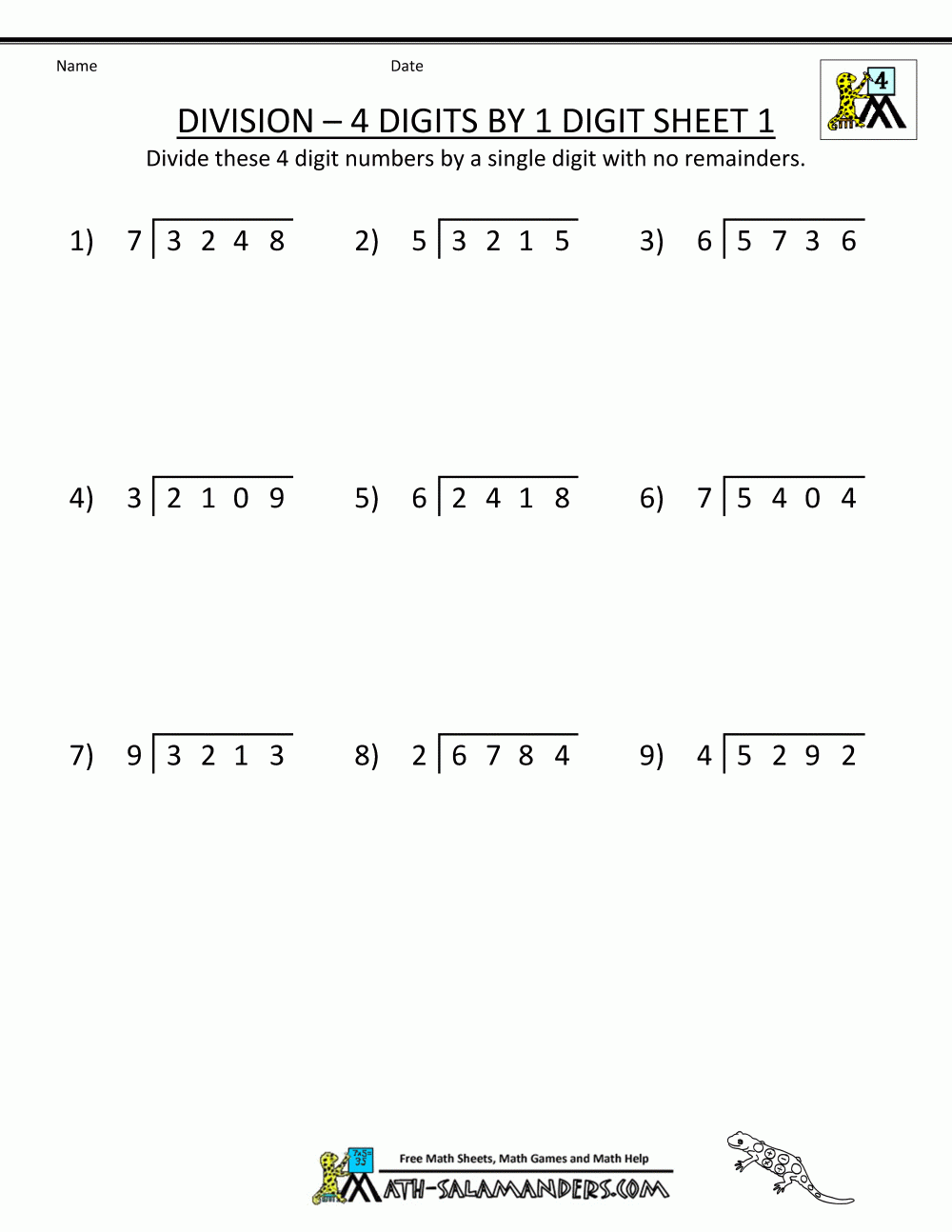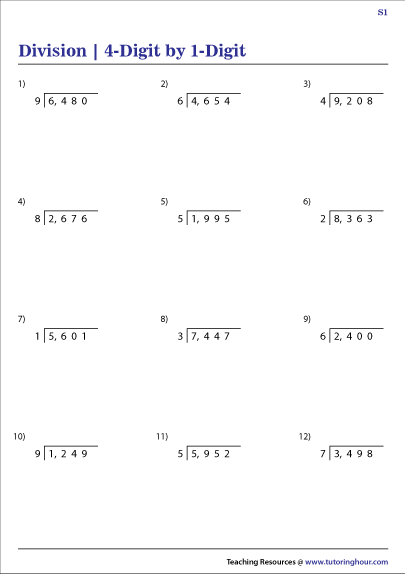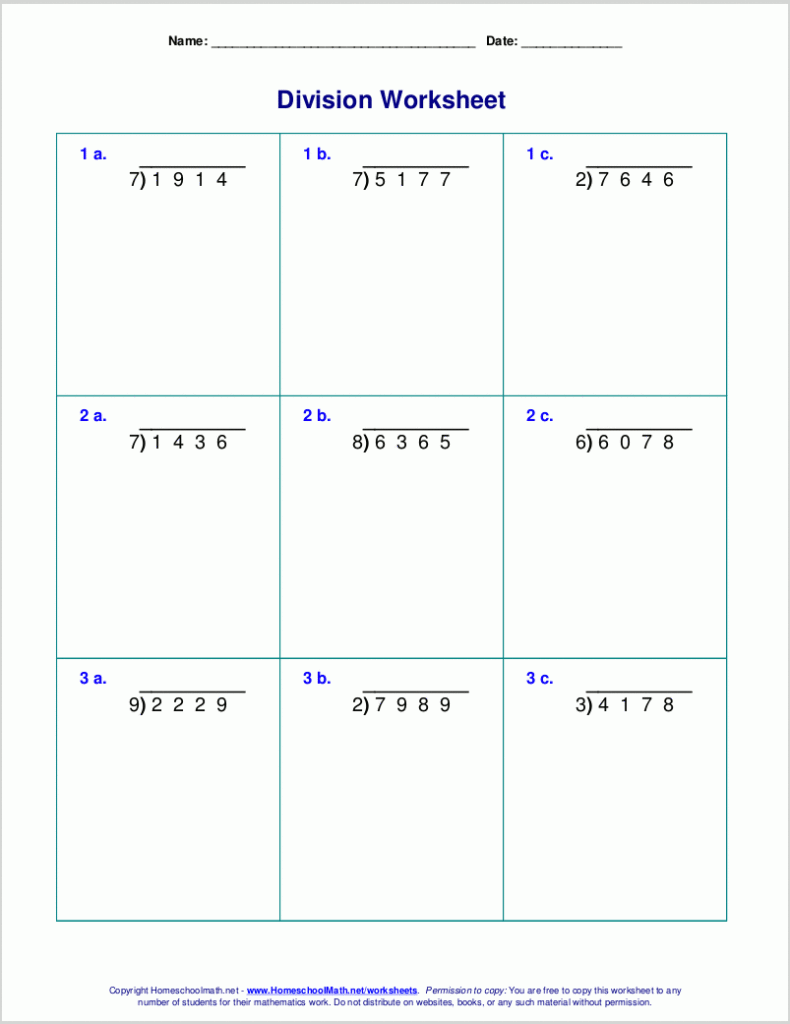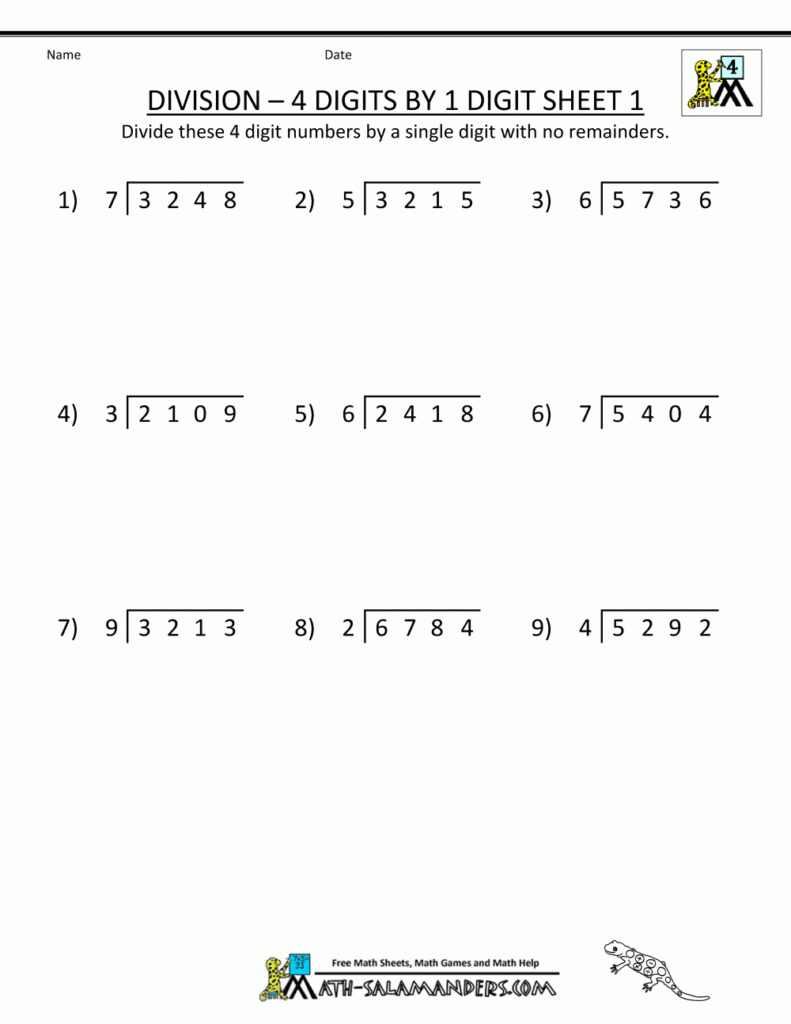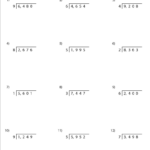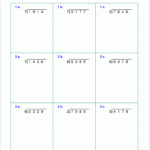4-digit By 1-digit Division With Remainders Worksheets Pdf – Worksheets for division can be a fantastic way to practice math concepts. They’re an excellent way to practice math concepts and prepare for math tests. Many formats are available for worksheets which include whole numbers as well as decimals.
entire numbers
You can teach your child the basics of how to perform mathematical operations with whole numbers by providing him with a worksheet regarding division of whole numbers. Worksheets on division of whole numbers can be utilized as homework assignments to test and improve division abilities, as well as aiding students in understanding the idea. These worksheets show the topic by using illustrations and real-world examples.
There are a variety of division worksheets. Many digit worksheets and long divisions are examples. Multi-digit integers must be divided by divisors. Then, they determine the quotient as well as the remainder. The most common method is used for long division worksheets.
There are worksheets which divide whole numbers using fractions, as well as worksheets that divide numbers in traditional ways. This is an excellent method to increase students’ understanding and make the subject more interesting to them.
Rule of Divisibility
Divide worksheets that include division rules can help children to understand the concept. They are able to keep kids interested in learning and help them with solving division issues. These worksheets aid children to easily comprehend and retain the information.
Students are asked to write the numbers that have been divided by the numbers given on a worksheet pertaining to divisibility rules. These worksheets are designed to assist children improve their decision-making skills and fine motor abilities. They assist children to track their education and find areas of knowledge that aren’t being filled in.
To determine if a number can be divided into numbers, you have to divide it. Therefore, the number must be divided by the total of the numbers. The last digit must be even.
fractional division
It is a good way to teach fractions using worksheets about splitting fractions. This activity is crucial in helping students learn algebra in later classes.
Most students have trouble with fractional division regularly in school. The difficulty lies in how confusing the concept can seem. Kids can avoid confusion by using worksheets that focus on fractions. These worksheets can be utilized by children to double-check their answers. Worksheets on dividing fractions might aid students in feeling more comfortable in class.
Word problems, images , and diagrams are all part of the worksheets which can be used to divide fractions. They allow students to practise writing mixed fractions. They are available in a variety of levels of difficulty. These worksheets can be used for the grades 3 to 6.
Decimal division
Dividing decimals by whole numbers is the same procedure. The only distinction is that there is no finality for decimal division. The decimal points are moved to the right in order to divide one decimal. The rounding process is upwards and downwards based on the number that follows the decimal point.
Before you are able to divide decimal numbers, you need to first determine the quotient. A decimal quotient can be described as the sum of the divisor’s products as well as the dividend. It could be a multiple of one integer 10, or a multiple of 100.
Most of the time, the decimal quotient of an amount is then rounded up to a specified amount of decimal point. This is achieved by trailing zeros. This is because the dividend is valued at a of 0.4 and the divisor has a value of 4.88, so the division 48.8 by 4 could be considered to be a decimal subdivision.
Utilize powers of 10 to divide massive numbers.
The power of ten is an essential idea. It can be very useful when it comes to dividing massive numbers. No matter if you are splitting decimal numbers or whole numbers, you need to be aware of how to alter the decimal point.
The decimal place must be moved as many places when dividing a large number as there are zeros within the power of 10. In the end, the value rises while the initial number is reduced. The number will shift to the opposite side if the value is lower. If it’s higher the value will shift to the left. When the number is less then one, the exponent will be decreased by the amount by which it is moved.
You have to subtract the exponents in the divisor from these exponents. The scientific notation to perform this step can be found here.
